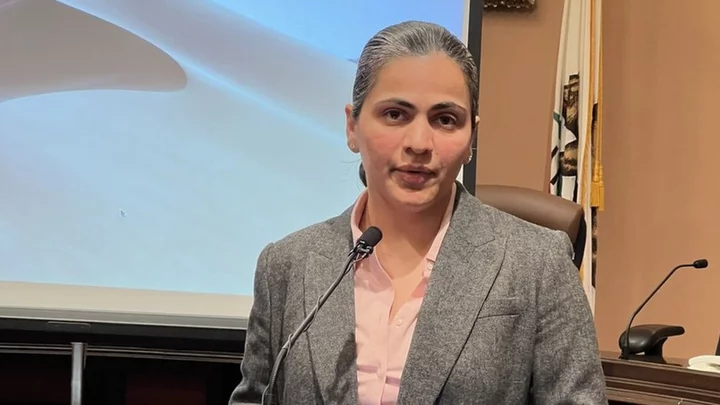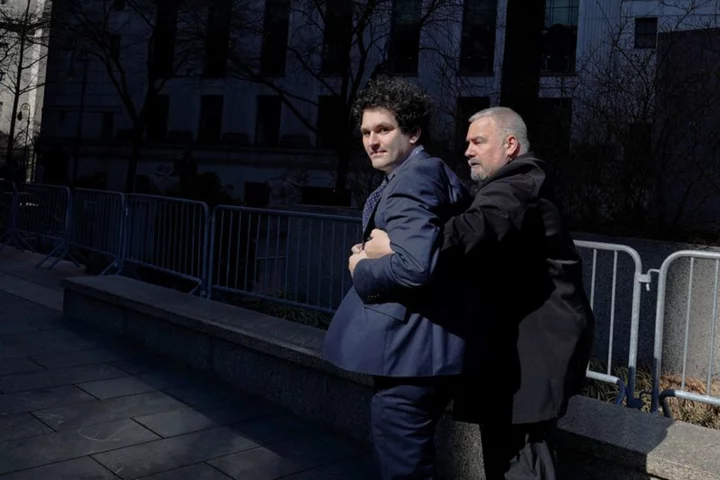
West Ham sign James Ward-Prowse from Southampton
West Ham have announced the signing of midfielder James Ward-Prowse from Southampton. The 28-year-old made 410 appearances for Saints and was captain as they were relegated from the Premier League last season. He has made a swift return to the top flight after joining the Hammers for an undisclosed fee – reported to be in the region of £30million – signing a four-year contract at the London Stadium. Ward-Prowse told the club’s official website: “I’m buzzing to be here at West Ham United. It’s great to be here and I’m looking forward to getting going. “From the outside looking in, this is a club that has been on the rise for a number of years now and coming off the success in the UEFA Europa Conference League last year, you can feel there is real momentum around this club. It’s great to be a part of it and I can’t wait to play my role in the games to come. “When I think about my game, it is based on hard work, graft, and giving 100 per cent. West Ham United has always been a club that epitomises that. You can feel that from the fans and you can see it in the players who are here and the lads that have come through the academy too. “I feel as though I will fit straight in and I can promise I will give my all for this football club in my time here.” Ward-Prowse spent two decades on the south coast having joined Southampton’s academy at the age of eight. During his time at St Mary’s, he earned 11 senior England caps and scored two goals for his country. Ward-Prowse scored 17 Premier League free-kicks for Southampton and needs just one more to draw level with the record, held by David Beckham. He becomes West Ham’s second major signing of the summer following the recent acquisition of fellow midfielder Edson Alvarez from Ajax. Manchester United defender Harry Maguire could be the next player in at West Ham as manager David Moyes looks to improve a team that finished 14th last season but went on to lift the Europa Conference League. They opened their season with a 1-1 draw at Bournemouth on Saturday and lost former captain Declan Rice to Arsenal for £105million in July.
2023-08-14 16:05

Bond Bulls at JPMorgan, Allianz Double Down on Bet Gone Bad
Convinced a recession in the US was near, some of the world’s most prominent money managers loaded up
2023-08-21 00:00

Microsoft, Google to not challenge EU gatekeeper designation
By Foo Yun Chee and Supantha Mukherjee BRUSSELS/STOCKHOLM Microsoft and Alphabet's Google will not challenge an EU law
2023-11-14 17:44

Conservative House floor blockade ends but GOP tensions persist
The House advanced a slate of bills Tuesday afternoon, bringing a floor blockade to an end after a tentative agreement was reached between Speaker Kevin McCarthy and hardline conservatives who had brought the chamber floor to a halt in retaliation over how GOP leadership handled the debt ceiling deal.
2023-06-14 06:03

Draymond Green's suspension should have been so much worse for the Warriors
The NBA and Adam Silver suspended Golden State Warriors star Draymond Green for five games over his actions in Tuesday night's game against the Timberwolves.
2023-11-16 09:23

Donald Trump slammed after Sean Hannity shares his speech on California's 'depraved' parental laws
During his speech, Donald Trump talked about challenging California's laws regarding parents needing to affirm a child's gender identity
2023-09-17 13:23

Ericsson Cleared by Nasdaq Stockholm in Iraq Insider Case
Nasdaq Stockholm cleared Ericsson AB of any violations regarding the Swedish telecom company’s disclosure of a probe into
2023-05-24 17:39

Chiefs' Travis Kelce expected to play against Broncos on Thursday night after ankle injury
Travis Kelce is expected to be available when the Chiefs play the Broncos on Thursday night, despite hurting his ankle when he slipped on the turf in last weekend’s win over the Minnesota Vikings
2023-10-11 02:50

Climate change hits women's health harder. Activists want leaders to address it at COP28
With the annual U.N.-led climate summit known as COP to convene later this month in Dubai, activists are urging policymakers to respond to climate change’s disproportionate impact on women and girls
2023-11-21 10:02

Activision Will Be Jilted if Microsoft Deal Blocked, CEO Kotick Says
Activision Blizzard Inc. will likely abandon a $69 billion takeover bid by Microsoft if the US Federal Trade
2023-06-29 01:43

Dallas Stars advance to Western Conference Final with pulsating Game 7 victory over Seattle Kraken
The Dallas Stars advanced to the NHL Western Conference Final with an exciting Game 7 victory over the Seattle Kraken on Monday.
2023-05-16 18:06

The divisive debate over California's anti-caste bill
California will become the first US state to ban caste discrimination if the legislation is approved.
2023-06-09 11:13
You Might Like...

Futures signal more gains on Wall Street; eyes on data, Biden-Xi meeting

Sam Smith's vocal cords are on the mend after show cancellations

Pimco Clients Add €14 Billion, Ending a Year of Outflows

Ubuntu Pulls Its Latest Desktop Release Over Hate Speech Concerns

'Sister Wives' star Christine Brown attends wine tasting event with fiance David Woolley and daughter Aspyn

Bankman-Fried heads to Brooklyn jail notorious for poor conditions

Deal on equal pay ‘done’, Canada captain Christine Sinclair says ahead of World Cup

Tottenham 1-2 Aston Villa: Player ratings as Watkins strike settles thriller
